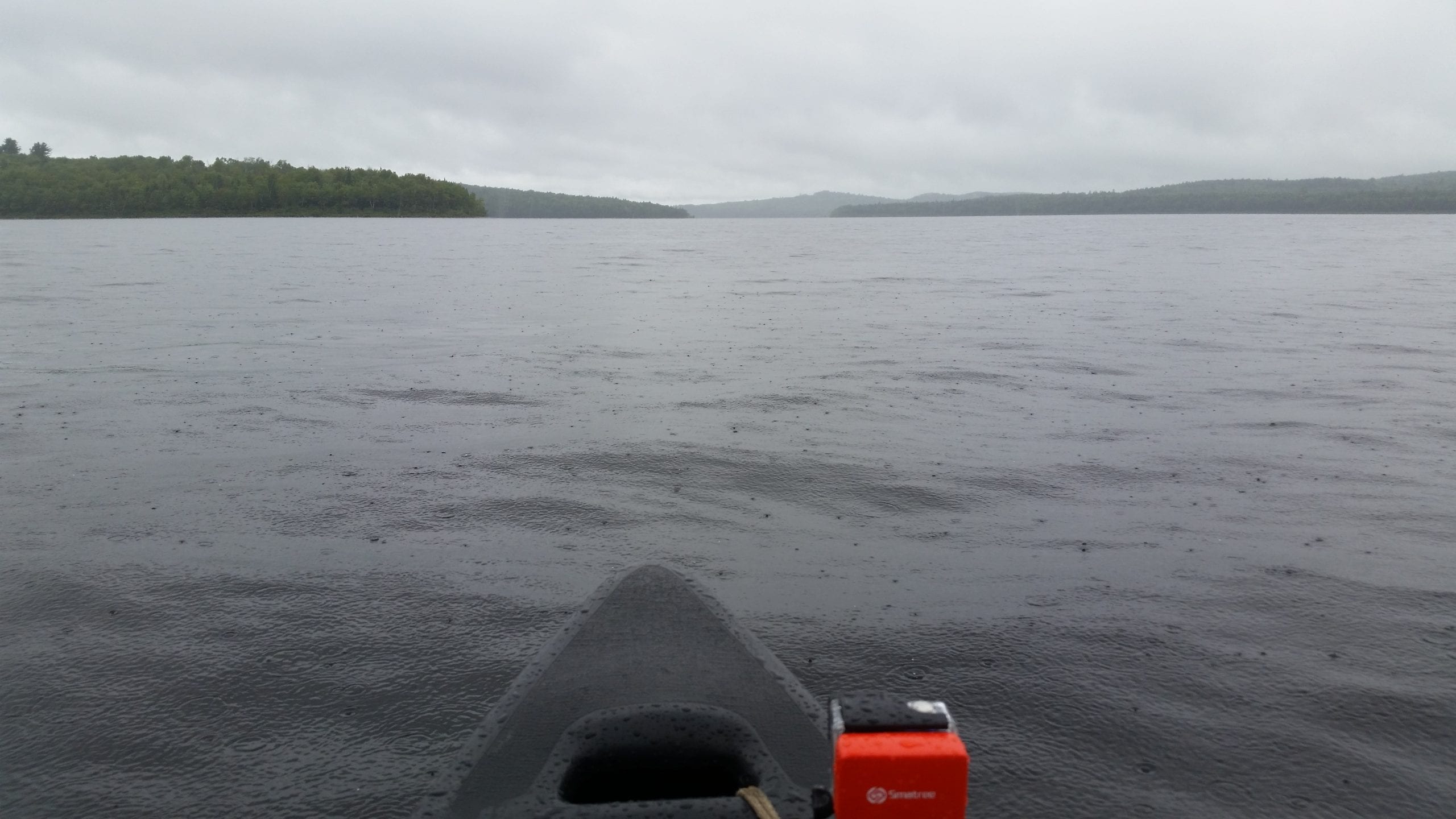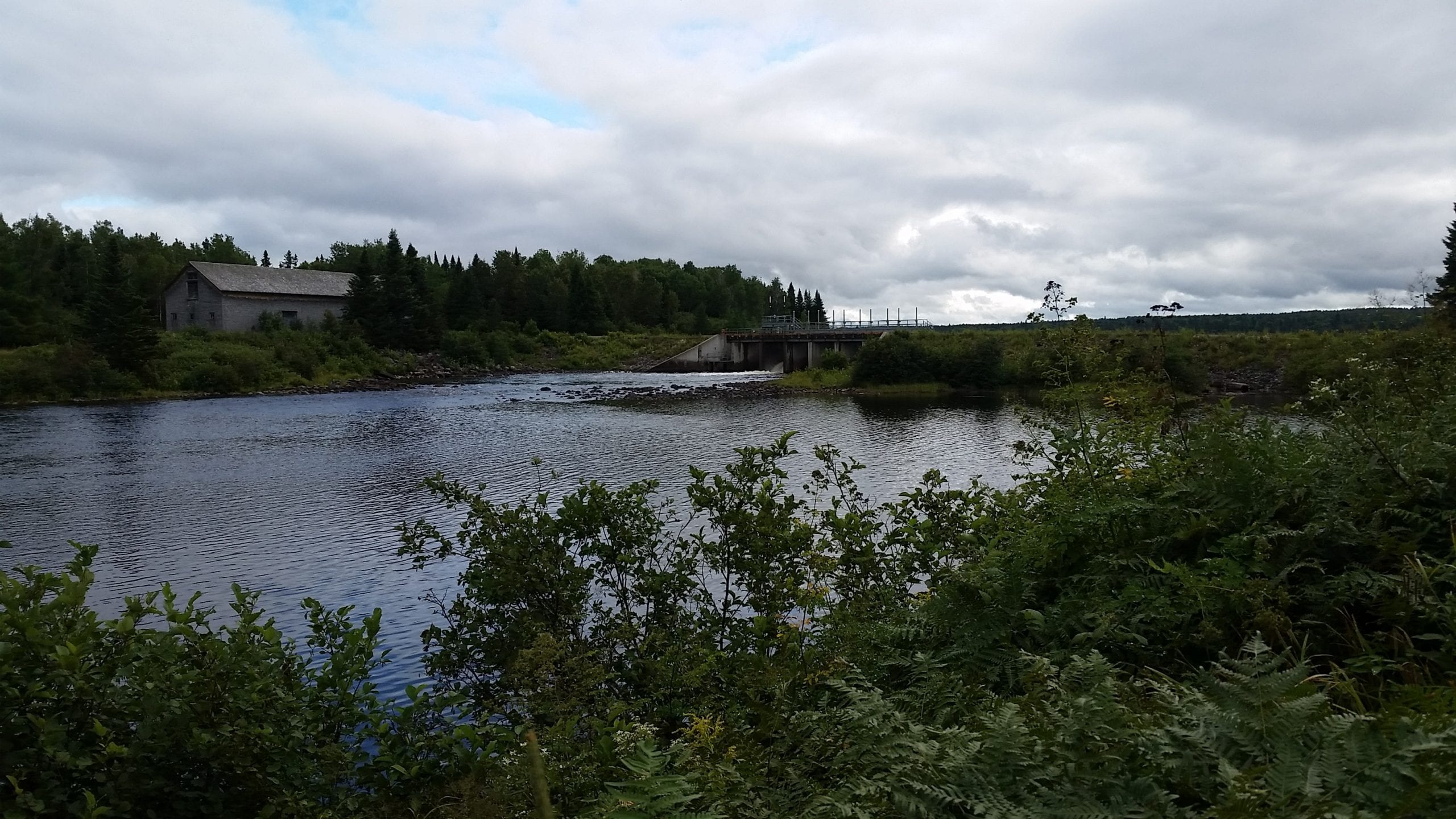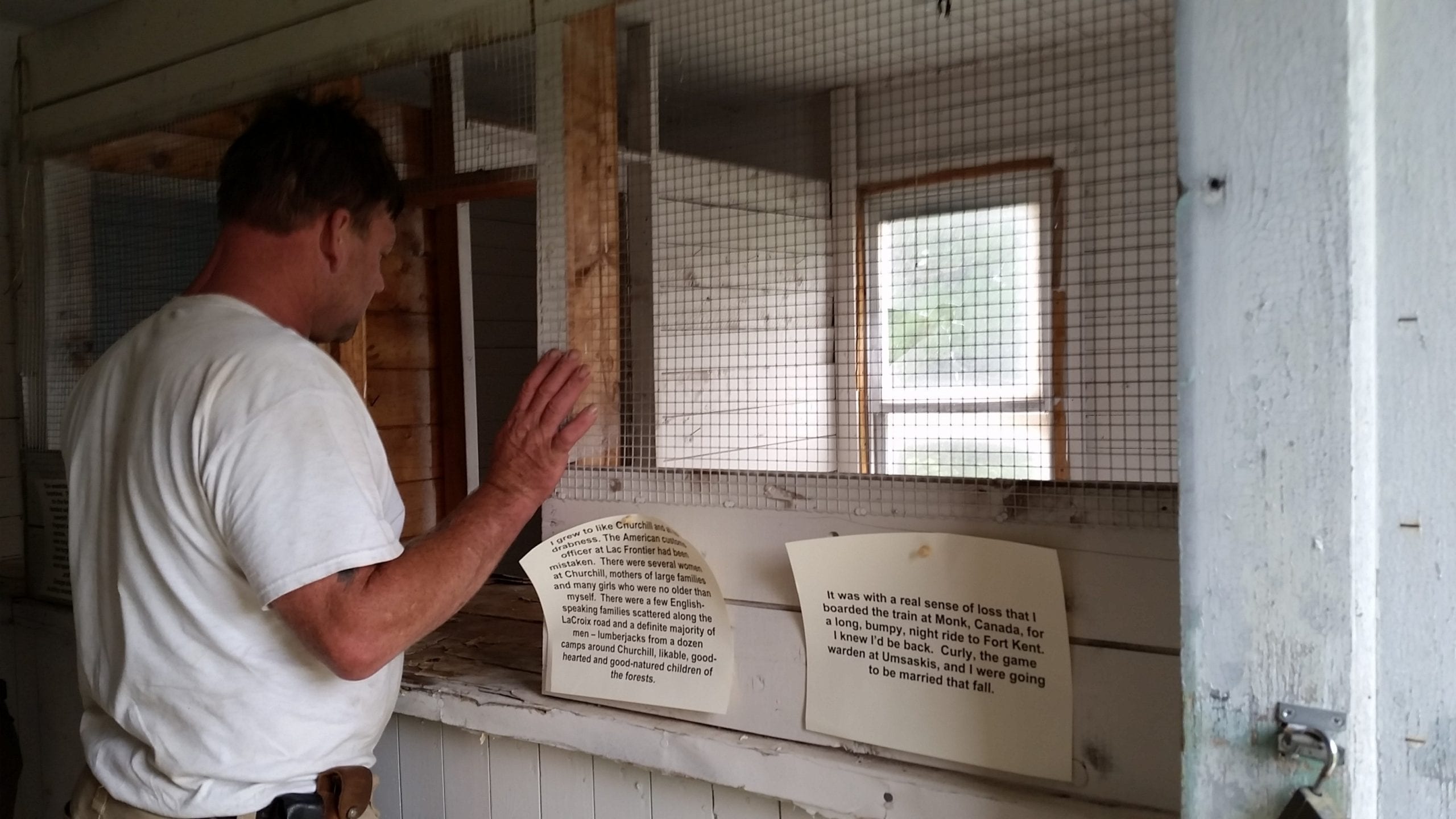Day Two on the Allagash Wilderness Waterway (AWW)
Allagash River CFS: 730 and rising
Time: 7:30 am – 4:50 pm
Hours: 9hrs 20 minutes
Miles: 16.9

{Plans can change fast.}
The weather was fair when we woke up on our second day on the Allagash Wilderness Waterway. We ate breakfast and started packing up camp when the rain started to fall. That wasn’t going to stop us. We were on the water by 7:30. A much better start than the day before! Our float plan showed we were supposed to be at Jalbert Campsite by the end of the day but we were pretty confident that wasn’t going to happen since we were already behind from starting on the upper section of Allagash Stream instead of Allagash Lake. The float plan had us running Chase Rapids on day two, although the rapids are dam controlled. The dam is only open from 8 am to 12 noon each day. If you show up later than that, you’re probably not going to run the rapids!


{The weather can change in the blink of an eye in the Allagash.}
We put on our raingear and crossed Chamberlain Lake to the portage which would bring us up close and personal with the abandoned locomotives. The portage is a bit secluded but with a good map and compass, you won’t have any trouble finding it. The tramway portage is also a snowmobile trail in the winter. The portage trail/snowmobile trail between Chamberlain Lake and Eagle Lake was created by Boy Scouts. Pretty cool, huh?


{The Abandoned Locomotives of the North Maine Woods.}
We made the first trip with our gear across the 0.6-mile portage and stopped to check out the trains and other historical artifacts along the trail on our way back for the second load. The trains have been there since the 1920’s and abandoned since 1933 when logging operations stopped in the area. It was going to cost more to get the locomotives out of the woods than they were worth, so they were left there.





{And then the rain came.}
On our second portage trip, heavy rain began to fall, but that wasn’t going to stop us. We finished checking out the trains and other artifacts and decided to head out on to Eagle Lake. Things looked a bit choppy from the shore but we figured we could paddle through it. We paddled for about 40 minutes when it became clear that things had gone from bad to worse. We were trying to paddle through two-foot swells and water was coming over the bow regularly. Henry had to keep taking breaks from paddling to bail us out, and I would get a lapful of water over the bow about every 15th wave. (Part of that was due to the shape of our canoe’s bow). For obvious reasons I didn’t get many photos of that ordeal, but I did (of course!) get some great GoPro footage of the paddle, which you can watch here.
{Heading for Hog Island.}
We decided to try and make it to Hog Island which is just off the shore of the tramway portage. It looks really close from the shore of Eagle Lake but feels really far away when you’re paddling against heavy wind and rain. We reached the island after 20 minutes of hard paddling only to realize there was no place to hunker down until the wind passed. It’s covered in thick brush and offers little to no shelter unless you’re a seagull. They literally flocked there (ha!).
{Heading back to the tramway.}
We decided to take a chance and head back to the tramway portage. Luckily, the canoe didn’t tip over in the waves, and we made it back in no time flat with the wind to our backs. We stayed there for about half an hour when suddenly the wind dropped out completely. Flat calm, sunny and 75. Okay, maybe not sunny, but definitely close to 75. Welcome to the Allagash.


{Farm Island Campsite for lunch.}
We headed for Farm Island, the next island up from Hog Island. It was much easier paddling this time, and we made it there right around noon. What a morning! It was still raining some so we had to set up the rain fly over the picnic table while we ate. We looked at the map and our float plan again and tried to estimate where we should stop for the night. High Bank and Jaws campsites looked like great locations, so we decided that would be our final destination for the day.



{How far should we go?}
That was always the question we asked each other every day. I had planned our itinerary to cover seven days of paddling, and we had planned for ten if the weather got really bad. We were having such a great time and really loved paddling longer distances to see what was around the next corner.


{Wildlife of the Allagash.}
After lunch, we headed out again. We saw a doe and two fawns on the shore of Round Pond. There are three Round Ponds along the Allagash Wilderness Waterway- I’m talking about the one just after Eagle Lake. Unfortunately, my camera couldn’t zoom in enough to get a good photo of them, but they were fun to watch! We passed under Johns Bridge which leads into Churchill Lake and started to see beautiful bald eagles perched high up in the trees. The rain ended around 3 pm and eventually, the clouds gave way to some late afternoon sunshine.


{Remote wilderness briefly gives way to boats and people.}
We began to see more boats on Eagle Lake at campsites along the shore. It looked like not many people were up for paddling in the rain, or had already reached their destinations by the time we came through. Most folks plan to make camp by 2 pm, which is a good rule of thumb. The winds can pick up later on in the afternoon, and most people leave early in the morning and are tired by that time. When it’s just Henry and me on a paddle adventure, we do things a bit different! Of course, doing things differently can lead to challenges and changes in plans, like this one: all of the campsites were full!


{Allagash Wilderness Waterway Ranger Bob Johnson}
We put a lot of miles under us that day and were ready for rest. Every campsite we had planned to stay at was full, and we were starting to wonder where we were going to stay that night. Suddenly, AWW Ranger Bob Johnston came by and talked to us. He told us that all of the sites before Churchill Dam on Churchill Lake were full, but no one had set up camp yet at any of the Churchill Dam sites. We had hoped to camp on the lake and not next to a dam, but it looked like we were out of options. We paddled for Churchill Dam, which is actually located on Heron Lake not Churchill Lake, and arrived around 4:30.



{Doing things differently and modified plans.}
I was glad our plans were changed and all of the sites were full. If they hadn’t been, we wouldn’t have spent so much time at Churchill Dam and talking to the AWW Rangers who work there. They are incredible people, and very knowledgeable about the history of the area. We chose the first campsite closest to the dam. As with all of the campsites at the dam, it was spacious and beautiful.


Staying at Churchill Dam (Churchill Depot) gave us a chance to check out the artifacts and learn about the rich history of the area. Ranger Bob asked us if we wanted a tour of the bunkhouse (it’s usually kept locked) so we checked that out while we were there, too.


Inside the Churchill Depot bunkhouse. Ranger Bob told us it is believed that the dark spots on the walls are from where the loggers would rest their heads while sleeping in their beds.
{Churchill Depot History Center}
After that, we looked at the dam and Churchill Depot History Center, a museum full of tons of artifacts, photos, and descriptions of things from the past. It was fantastic. The museum explains the rich logging history of not only Churchill Depot but much of the area in the Allagash Wilderness Waterway.







{More about Churchill Dam}
Since our first stay there, the dam has become one of my favorite places to visit. First, it is the beginning of the incredible Chase Rapids, which we were going to experience the following morning. Second, the Allagash Wilderness Waterway Rangers who stay there are fantastic to talk to (as are all of them along the entire AWW!). Third, when you run Chase Rapids the Rangers will drive your gear down to the end of the rapids for a small fee so you don’t have to worry about losing it in the river. Fourth, you can drive directly to Churchill Dam from the logging roads so you don’t have to paddle the waterway to get there if you don’t want to. Fifth, there is a lot of history at the dam. Sixth, it is incredibly beautiful with campsites right on the river. We actually drove back to the dam with our canoe and dog Wrangler that October just to run the rapids and camp out. It was a fantastic getaway.

{A fine ending to an incredible day.}
We set up camp and started on dinner. We had beef stroganoff, chipotle noodles, canned corn, steamed broccoli, and carrots. That night we fell asleep to the sound of the rushing water from the dam, excited to hit the rapids first thing in the morning. Hearing the rushing water from the dam and the rapids was exciting and I couldn’t wait for tomorrow’s action- 9 miles of whitewater!


